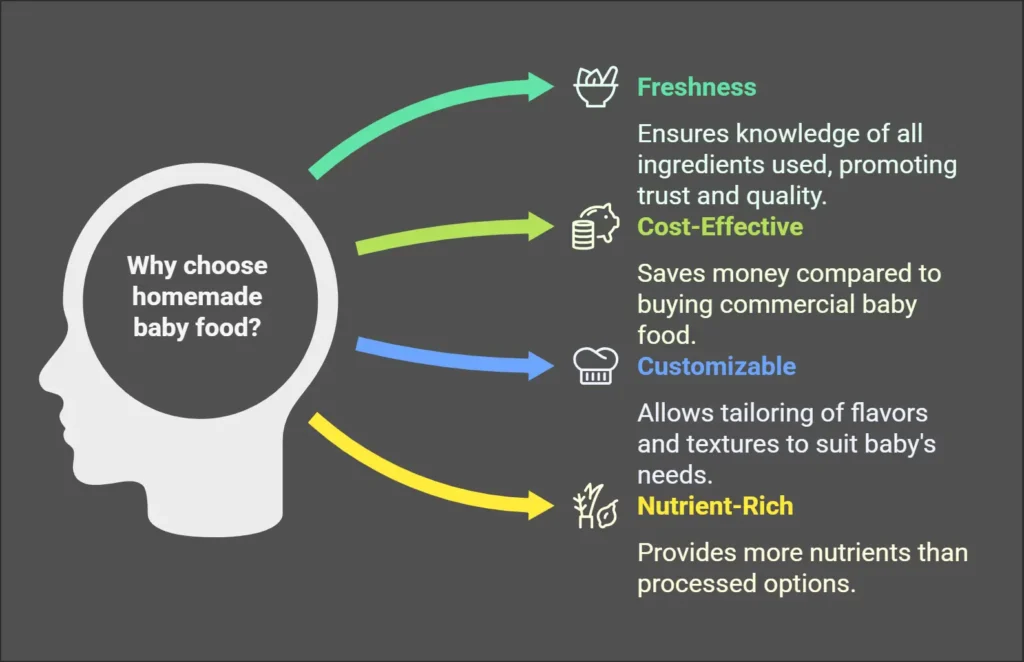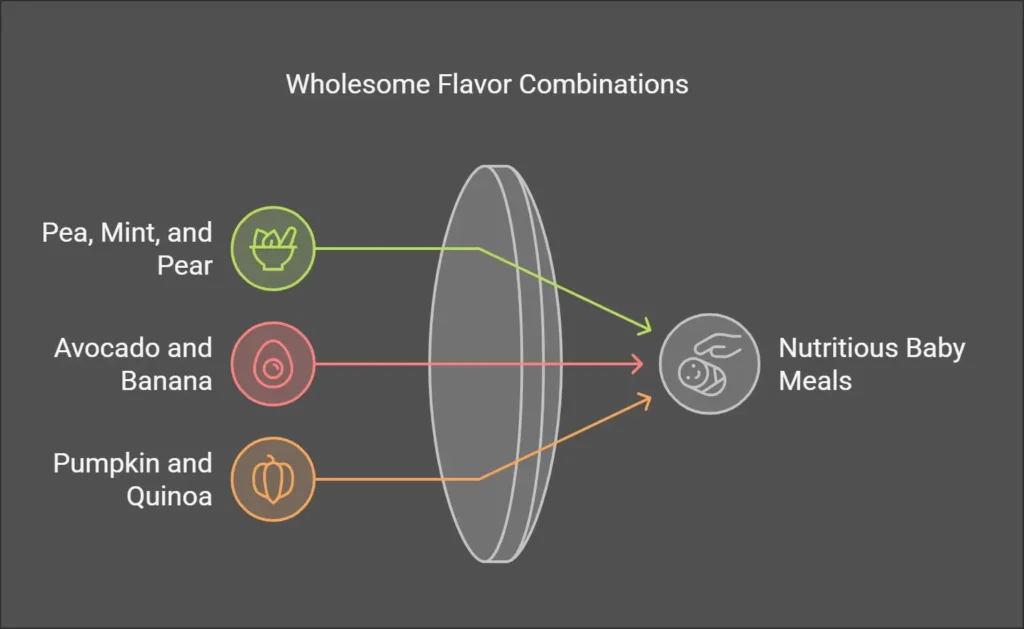Introduction
Feeding your baby can be both exciting and a bit overwhelming. With so many options, where do you even begin? Whether you’re introducing solids for the first time or expanding your baby’s menu, having a few solid “infant food ideas & recipes” up your sleeve can make mealtime a breeze. This guide inspires you with practical tips, nutritious recipes, and fun ways to keep your baby’s taste buds happy. Let’s dive in!
Thank you for reading this post, don't forget to subscribe!Why Homemade Baby Food?
Homemade baby food is a labor of love that offers several perks. Why choose homemade over store-bought? Here are some reasons:
- Freshness: You know exactly what goes into your baby’s meals.
- Cost-Effective: Preparing food at home can save a pretty penny.
- Customizable: You can tailor flavors and textures to your baby’s preferences.
- Nutrient-Rich: Fresh ingredients often pack more nutrients than processed ones.
Still not sure? Let’s look at how easy it can be to whip up meals your baby will adore.

Getting Started: Tools of the Trade
Before diving into recipes, make sure you’ve got the right tools. You don’t need a fancy kitchen setup—just some basics:
- Blender or Food Processor: For smooth purees.
- Steamer Basket: Keeps nutrients locked in while cooking veggies.
- Ice Cube Trays: Perfect for freezing small portions.
- Baby Spoons and Bowls: Gentle on gums and easy for little hands.
Ready? Let’s roll up our sleeves and start cooking!

Introducing solids is a big milestone. Start with single-ingredient purees to monitor for allergies and get your baby used to new textures and flavors.
Classic Puree Recipes
Sweet Potato Mash
- Ingredients: 1 sweet potato, water, or breast milk/formula.
- Directions: Peel and steam the sweet potato until soft. Blend until smooth, adding water or milk to achieve the desired consistency.
- Ingredients: 3 carrots, water.
- Directions: Steam carrots, then blend with a splash of water until velvety.
Apple-Banana Bliss
- Ingredients: 1 apple, ½ banana.
- Directions: Steam the apple, then blend with the banana for a naturally sweet treat.
Pro Tip: Freeze leftover purees in ice cube trays for easy portioning later!
Stage 2: Flavor Combos to Expand the Palate

Once your baby is comfortable with single ingredients, it’s time to mix things up! Combine flavors and textures for a more exciting mealtime.
Creative Combinations
Pea, Mint, and Pear
- Sweet and refreshing, this combo is a hit! Blend steamed peas, a ripe pear, and a tiny sprig of mint.
Avocado and Banana
- Mash together for a creamy, nutrient-packed snack.
Pumpkin and Quinoa
- Cook quinoa and mix it with steamed pumpkin for a wholesome, hearty meal.
Pro Tip: Add spices like cinnamon or nutmeg (in tiny amounts) to introduce subtle new flavors!
Stage 3: Finger Foods and Beyond
When your baby shows interest in self-feeding, it’s time for finger foods. These recipes will keep your baby engaged and satisfied.
Baby-Friendly Finger Foods
- Soft Veggie Sticks: Steam carrots, zucchini, or green beans until soft enough to mash between fingers.
- Mini Pancakes: Whip a batter with mashed banana, oat flour, and an egg. Cook small rounds for easy grabbing.
- Cheese Cubes: Mild cheeses like mozzarella are perfect for little fingers.
A Week of Meal Ideas
To make life easier, here’s a sample week of meals for your baby:
Monday
- Breakfast: Mashed avocado and toast fingers.
- Lunch: Sweet potato and carrot puree.
- Dinner: Apple-banana mash.
Tuesday
- Breakfast: Oatmeal with a dash of cinnamon.
- Lunch: Pumpkin and quinoa mix.
- Dinner: Steamed broccoli florets.
Repeat with variations for the rest of the week!
FAQs
How do I know if my baby is ready for solids?
What’s the best first food?
How much should I feed my baby?
Can I season my baby’s food?
Conclusion
Feeding your baby is about more than just nourishment. It’s about laying the foundation for a lifetime of healthy eating. Incorporating these “infant food ideas & recipes” makes the process fun, easy, and rewarding. Whether mashing avocados or whipping mini pancakes, remember that every bite is a step toward your baby’s growth and happiness. Happy cooking!

